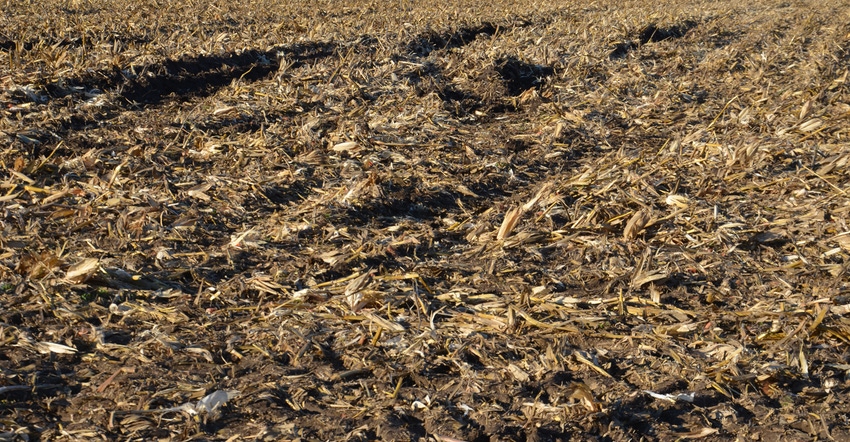December 25, 2018

What is soil compaction, and how does it occur? When soil particles are pushed together so the amount of air space between them is reduced as compared to a normal state, it’s called soil compaction.
Larger equipment, earlier planting when soils may not be ready, plus use of loaded trucks and manure tankers can lead to compacted soils. Working wet soils when soil moisture content is above the field capacity and soil strength is reduced adds to compaction. Continuous row crops instead of rotations of crops with differing root lengths also increase chances for compaction.
Why is soil compaction an essential evil? If you farm, you’re going to have some soil compaction. You cannot eliminate it. That was evident for many this past fall when it became necessary to track or rut parts of fields to get those last crops harvested.
However, you can minimize soil compaction. Yet what can you do in a wet fall or spring? You must plant crops before it’s too late, even at the risk of causing some compaction. So, what can you do to reduce the effects of soil compaction?
Soil compaction causes yield reduction because plant roots cannot penetrate the compacted layers; thus, their growth is stunted. Plants cannot use nutrients and water below the compacted layers. Water absorption from rain is reduced, which increases the chances for soil erosion and water loss.
Research conducted at the University of Wisconsin shows that 70% to 80 % of compaction is caused on the first pass. Those studies also indicate that growth and plant height are retarded. Yield losses varied from 10% to 50% in various crops.
Studies conducted at the University of Minnesota show that soil compaction in dry years will produce stunted plants and reduced yields due to decreased root growth. On the other hand, compaction in wet years will reduce soil aeration and increase denitrification, or loss of nitrate N into the atmosphere. This can also decrease potassium uptake, increase incidence of disease, and produce weaker roots and stalks. Soil compaction in surface layers can increase chances of water and soil loss and cause erosion.
Many ideas for reducing soil compaction are common sense. For example, avoid fieldwork when soils are wet. Early planting is good, but you don’t have to be the first to plant in your neighborhood. Make sure the ground is ready, and you won’t be causing unnecessary compaction in your hurry to get planted.
Restricting traffic to certain lanes should help reduce compaction on most of the farm. Practice controlled traffic and use the same path every year, if possible. Use of the road or headlands is recommended.
Addition of organic matter such as manure helps improve soil structure and reduce soil compaction. Use of cover crops with tillage radishes and rotation with different crops also help lessen compaction. Crops have different root lengths and structures and therefore mine different layers of the soil, improving yield potential.
If compacted layers are deeper than 12 inches, subsoiling is recommended. Strip tillage is also being used as a means of reducing soil compaction.
Yes, soil compaction is an essential evil and cannot be completely eliminated. You must constantly fight it if you want to improve crop yields!
Nanda is president of Agronomic Crops Consultants LLC. Email [email protected] or call 317-910-9876.
About the Author(s)
You May Also Like






